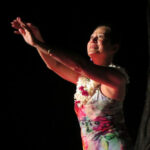The grit of New York City pavements often met the soles of my dance shoes every weekend in my twenties. My friends and I, all aspiring ballet dancers, made the pilgrimage to the city for open auditions hosted by professional ballet companies from across the nation. It was a familiar scene: the same faces etched with hope and ambition, the whisper of nervous chatter, and the underlying current of fierce, yet respectful, competition. Amongst us were the regulars – the red-headed dancer famed for her incredible flexibility, the elegant brunette with breathtakingly arched feet, and Becca, a dancer whose technical prowess mirrored my own in what felt like a constant, unspoken challenge. We were all chasing the same elusive dream: the callback, the golden ticket that could transform into a contract, a paid position, a tangible step towards our aspirations. Post-audition, we’d often find ourselves in the same bustling diners, sharing stories of our home studios and current apprenticeships. “What’s the training like in Tennessee?” we’d ask, or “Tell me about your director in Atlanta?”
These auditions, often for companies seeking just a single dancer, were shrouded in mystery beyond the height requirements they clearly stipulated. Armed with this minimal information, we’d make the five-hour drive, stretch amidst the throng in crowded lobbies, pin on our audition numbers, and give it our all. We knew that mastering specific Dances For Auditions was key, but the specifics remained tantalizingly vague until the moment arrived.
One audition in particular, for Ballet Arizona, stands vividly in my memory. The sheer volume of dancers was staggering, easily exceeding 100 hopefuls. The initial cut was swift and decisive. The voice of the director cut through the tense silence, “If I call your number, thank you for coming, that is all for today.” A wave of anxiety washed over us as we waited, the quiet sighs of relief audible as numbers were skipped. As dancers were dismissed, fleeting smiles of encouragement were exchanged, a silent acknowledgment of the shared pressure, before refocusing on the next combination. There was no time for commiseration, no space for “chin up” pep talks; maintaining focus was paramount to stay in contention. After barre work and two further rigorous cuts, the group dwindled to around 30 dancers. “Keep it together, Marianne,” I mentally urged, my friends having been excused in earlier rounds. A pang of wanting to offer comfort was overridden by their knowing glances from the sidelines, a silent “This is yours now, go get it.”
I navigated the subsequent cuts, finding myself among the final four. This could be it. Through the studio window, my friends watched, their hands clasped, their carefully styled audition hair now slightly disheveled, dance bags packed and ready.
The director then announced the final challenge: a demanding sequence of fouetté turns. Turning was, and remains, a strength of mine. Confidence surged, excitement bubbled. I’ve got this. We performed the sequence in pairs, and fate, or perhaps the audition panel, paired me with Becca.
An agonizingly long pause followed, punctuated by hushed deliberations amongst the Ballet Arizona leadership. Then, the verdict: the other two dancers were thanked and dismissed. Becca and I were asked to perform the fouetté sequence one last time.
To this day, the memory of that audition, the intense focus, the camaraderie, the palpable drama, remains a cherished part of my dance journey. I am certain I danced with precision and passion, giving my best rendition of those crucial dances for auditions.
And I sincerely hope Becca relished her contract. She undoubtedly earned it.
Marianne Kelley – Ballet Arizona hopeful, 1993


